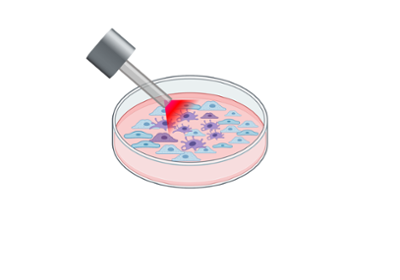
A researcher at Texas A&M University is launching a project to better understand how light can affect neurons in the brain.
Dr. Alex Walsh, assistant professor in the Department of Biomedical Engineering, recently received a grant through the Air Force Office of Scientific Research’s (AFSOR) Young Investigator Research Program. The grant supports Walsh’s research to better understand why neurons in the brain are affected by infrared light.
“We know that the infrared light induces a thermal gradient, so it heats the neurons. It happens very fast, within milliseconds, and changes the neuron’s electrical signals,” Walsh said. “But we don’t know how.”
One hypothesis is that the stimulation affects the ion channels in neurons, but responses are observed even in cells that lack light- and heat-sensitive channels. With the Air Force grant, Walsh will pursue research to test if there’s a relationship between infrared light and cellular metabolism. If the infrared light is impacting how cells produce energy, it could be modulating the neuron’s activity because ion channels need energy to function.
“We use infrared lasers and fiber optics to deliver the infrared light on top of the cell, and then use electronics to shape the pulses of the light to be milliseconds in duration,” Walsh said. “We can apply pulse trains or single pulses.”

Walsh said one challenge that has limited the broader field of studying infrared light’s impact on cells is that optimizing parameters is difficult.
“Everyone uses different laser sources, wavelengths and pulse parameters, so comparing studies across different labs is challenging,” Walsh said.
Her lab has applied for a grant to buy multiple laser sources for a head-to-head comparison of different wavelengths rather than using just one, which can make replicability difficult.
Being able to stimulate neurons to control cell behavior could have a wide variety of applications in the healthcare field, Walsh said. Many diseases, ranging from seizures and pain management to heart arrhythmias, could be treated by stimulating neurons to turn off.
Another application involves turning the neurons on to interact with medical devices. Current prosthetic devices are integrated with the brain through electrical stimulation, but there are limitations that impact the precision of the connection.
“There may be times we want to stimulate neurons for man-machine interfacing. If you have a machine like an artificial leg and you want to be able to control it, the infrared light could be a precise way to tune biological responses,” Walsh said.
She is also interested in learning if infrared light impacts other cell types as this may provide a light-based technology to control cell function.